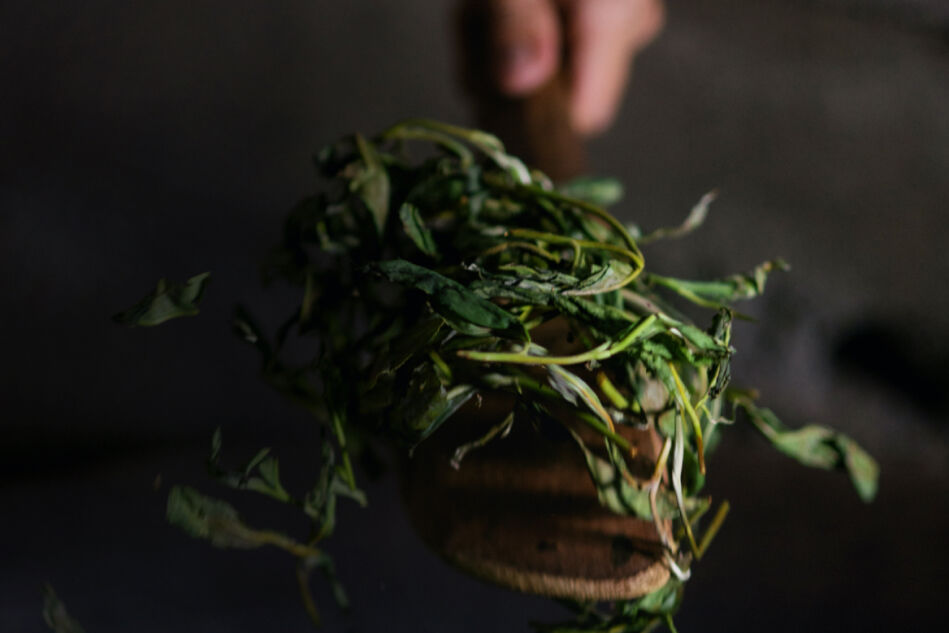Some like it sweet.
5 facts on sugar: a guide for the perfect sweetener for tea.
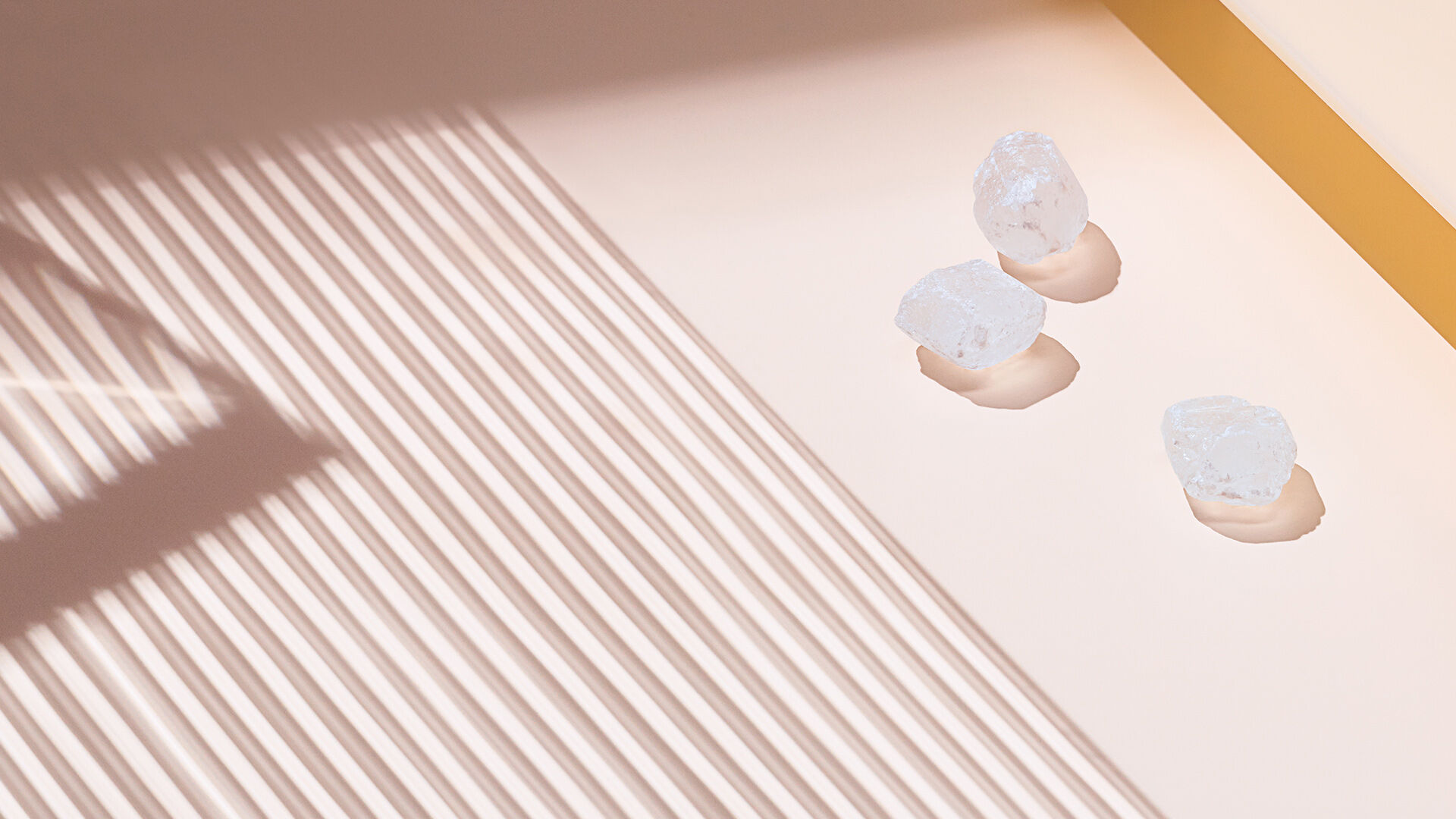
From sugar candy to crystal sugar to honey – for those who like it sweet, sugar adds a certain extra note of flavour to every tea.
What many tea drinkers don’t know is that there’s a right sweetener for every tea category. In addition to some extraordinary facts on sugar, we’d like to introduce you to a few ideal tea-sugar combinations.
Fact 1: RAW CANE
Sweet gold of the kings.
Raw cane sugar has a wonderful golden colour; it retains this colour because it often does not undergo as elaborate a refining process as white sugar. Raw cane sugar crystals appear darker because of the molasses that remains on them, lending the sugar a slightly caramelly note – the darker the sugar, the more pronounced this note. White or regular sugar, on the other hand, is refined until it has lost its colour and it also tastes less intense. For this reason, it has a longer shelf life. The analogy between raw cane sugar and gold is perfect: there was a time when sugar was an absolute luxury, it was used by kings to flaunt their wealth. Sugar cane came to New Guinea, the Philippines, India and Persia via Melanesia and finally found its way to the Mediterranean region around the end of 11th century. The process of making sugar has remained the same: Sugar cane is crushed and the juice is pressed out, concentrated and then filtered. The sugar produced at the end of this process is rinsed once with water, centrifuged and dried. The end product is lighter raw cane sugar with low molasses content and less natural flavour. Darker sugar varieties are perfect for those who love caramelly sweetness. Our recommendation: Our amber-coloured RAW CANE perfectly enhances the flavour of black teas, aromatic green teas as well as herbal and fruit infusions. For instance, when added to our STRONG ASSAM black tea, this sugar accentuates its strong malty flavour.
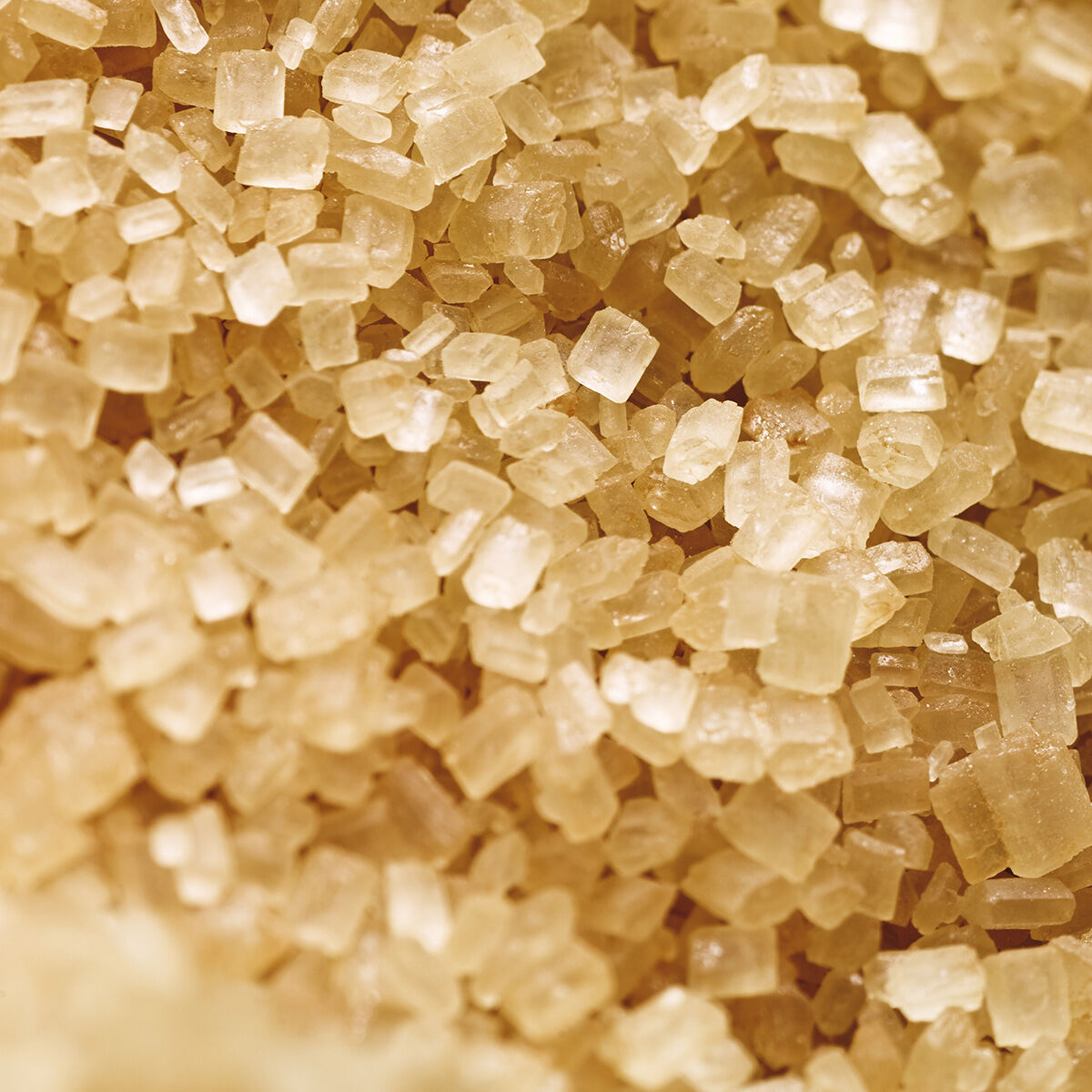
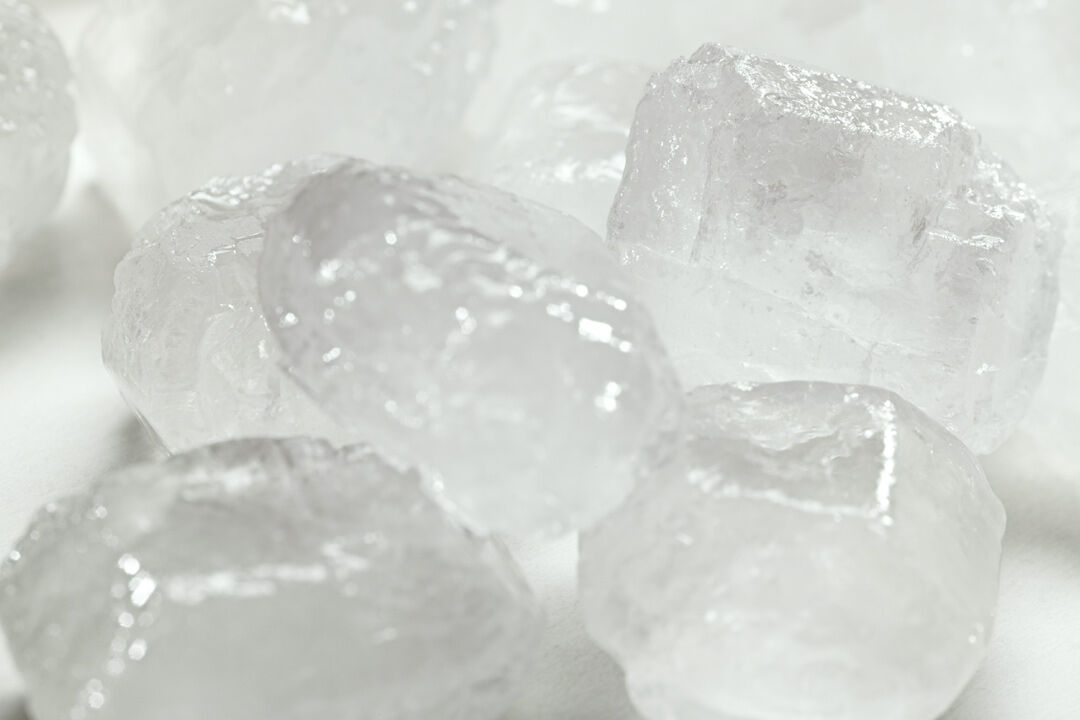
Fact 2: JEWEL CANDY
Diamonds made of sugar.
Beet sugar is boring? Says who? Just look at those sugar crystals! They need two or three weeks to attain a size up to 24mm. For this, the granules slowly crystallize and grow into an extremely concentrated sugar solution. These sweet diamonds not only look appealing in your tea, they can also be simply spooned out and used in your next cup of tea – or even enjoyed as a lollipop. This is because sugar candy dissolves extremely slowly. Those who prefer to control the level of sweetness in their tea can simply take the sugar candy out of their cup sooner.
Our recommendation: JEWEL CANDY accentuates the flavour of fine tea varieties because it has no natural flavour of its own which would overpower the delicate nuances of light teas
Fact 3: STRONG MASCOBADO
A strong character amongst sugars.
The strong in STRONG MASCOBADO signifies the intense, slightly malty caramel flavour. Mascobado is a unique unrefined cane sugar produced in the Philippines using traditional methods where the sugar cane juice is simply filtered, thickened, dried and ground, thus keeping valuable minerals and vitamins intact. This sweet charmer packs quite a punch – no other sugar variety has such pure, authentic and unique flavour that can be used in myriad ways, from all kinds of food to sauces all the way to desserts. For instance, this strong sugar is even added to cocktails like mojito and the caipirinhia, as it tastes much more intense than regular cane sugar.
Our recommendation: Unrefined cane sugar is ideal for strong black teas or full-flavoured herbal and fruit infusions. STRONG MASCOBADO beautifully complements the flavours of aromatic anise, fresh fennel and pungent liquoirce in our Epic Liquorice herbal infusion.

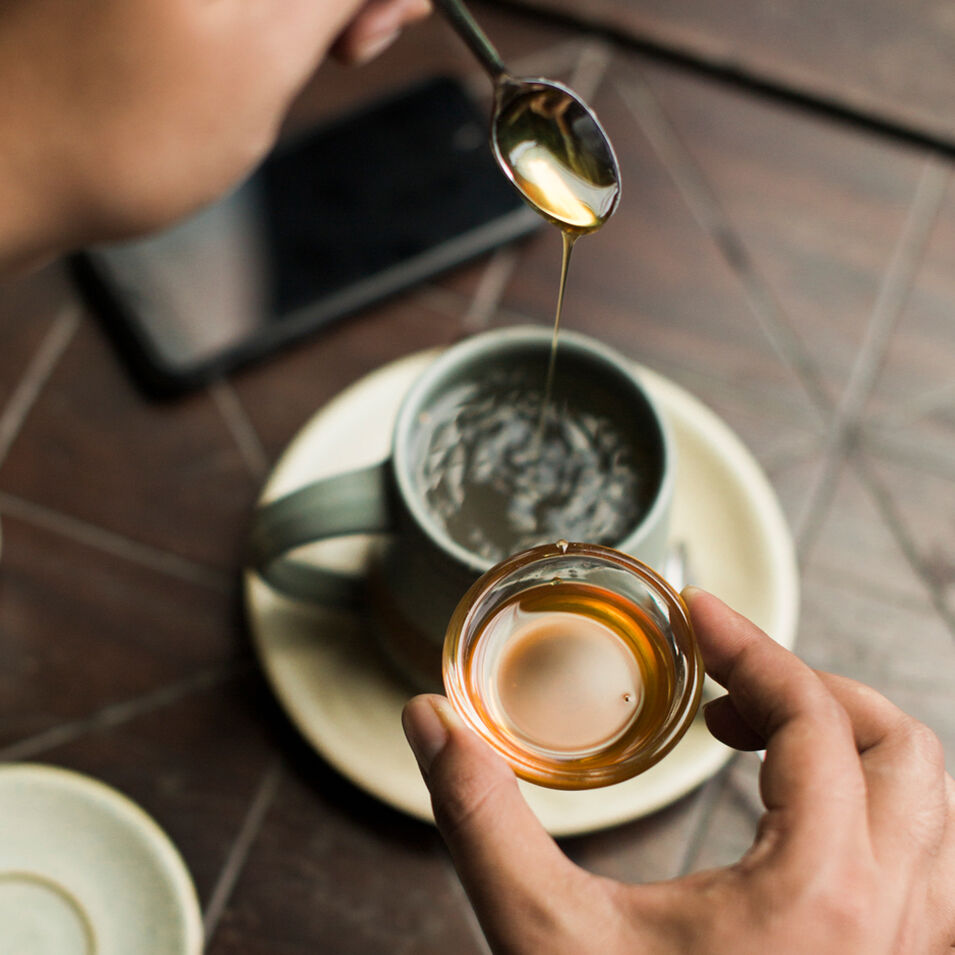
Fact 4: Honey
The first choice of the gods.
The history of honey is as old as time: We can have cave paintings which prove that it was being collected as early as the Stone Age. Ancient Egyptians called it the food of the gods and believed it to be the source of eternal life, they even buried pots of honey in tombs. As varied in its historical significance, equally diverse are the types of honey, which make for a rich variety of sweetness in tea. But what is the right way to prepare tea with honey? For the best flavour, mix one teaspoon of honey in approx. 250ml of tea. But be careful: The tea should cool down a little before adding honey. This is the perfect way to allow its flavour to develop fully.
Our recommendation: Because honey itself has a strong natural flavour, it is best suited for tea varieties that are also rich in flavour. This creates an interesting symphony of flavours of tea and honey. Our EASY DREAMER pairs perfectly with acacia or blossom honey. The honey accentuates the harmonious blend of fennel, valerian and soothing melissa in the tea.
Fact 5: Coconut sugar
From juicing trees to making sugar.
Yes, you read it right – trees can also be juiced. Sugar farmers climb up coconut palm trees up to ten metres high, their spadices contain the raw material for coconut sugar. The coconut spathe is tied up and a cut is made on the spadix to collect the sweet sap that flows from it. Fun fact: A coconut palm can be juiced for almost 50 years. Coconut sugar too has a particularly caramelly taste, accompanied by subtle nuances of malt and vanilla. Although the name may suggest otherwise, coconut sugar does not taste anything like coconut.
Our recommendation: In black teas like EARL GREY coconut sugar accentuates the elegant citrus notes and the flavour of bergamot oil.

Sugar your tea.
Which tea is yours?
More articles
More articles

Not less, but better.
Sharpening one's own awareness. Recognizing what one really needs. Giving things new appreciation. That's what minimalism is about. Following the motto 'less is more', more and more people are embracing the desire for clarity and order – even in the design of their homes.

Should we always follow our nose?
23,000 times – that´s how many breaths we take on average per day. And that means a multitude off different scents float in through our nose evoking a wide variety of reactions in us. In this article we´ll explain the psychological reasons behind this and why we should let our noses discover new things more often.
More articles
More articles

Not less, but better.
Sharpening one's own awareness. Recognizing what one really needs. Giving things new appreciation. That's what minimalism is about. Following the motto 'less is more', more and more people are embracing the desire for clarity and order – even in the design of their homes.

Should we always follow our nose?
23,000 times – that´s how many breaths we take on average per day. And that means a multitude off different scents float in through our nose evoking a wide variety of reactions in us. In this article we´ll explain the psychological reasons behind this and why we should let our noses discover new things more often.
